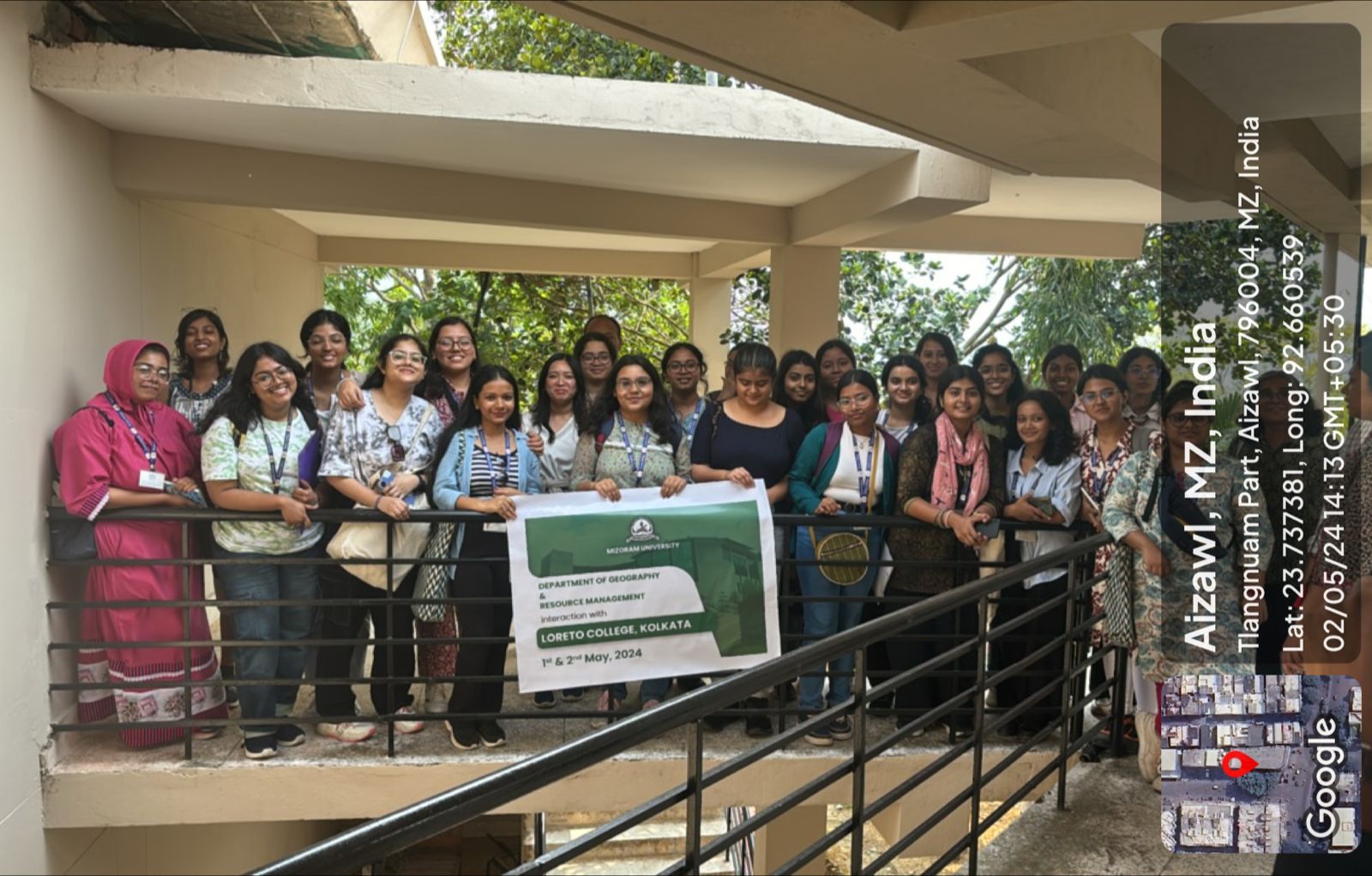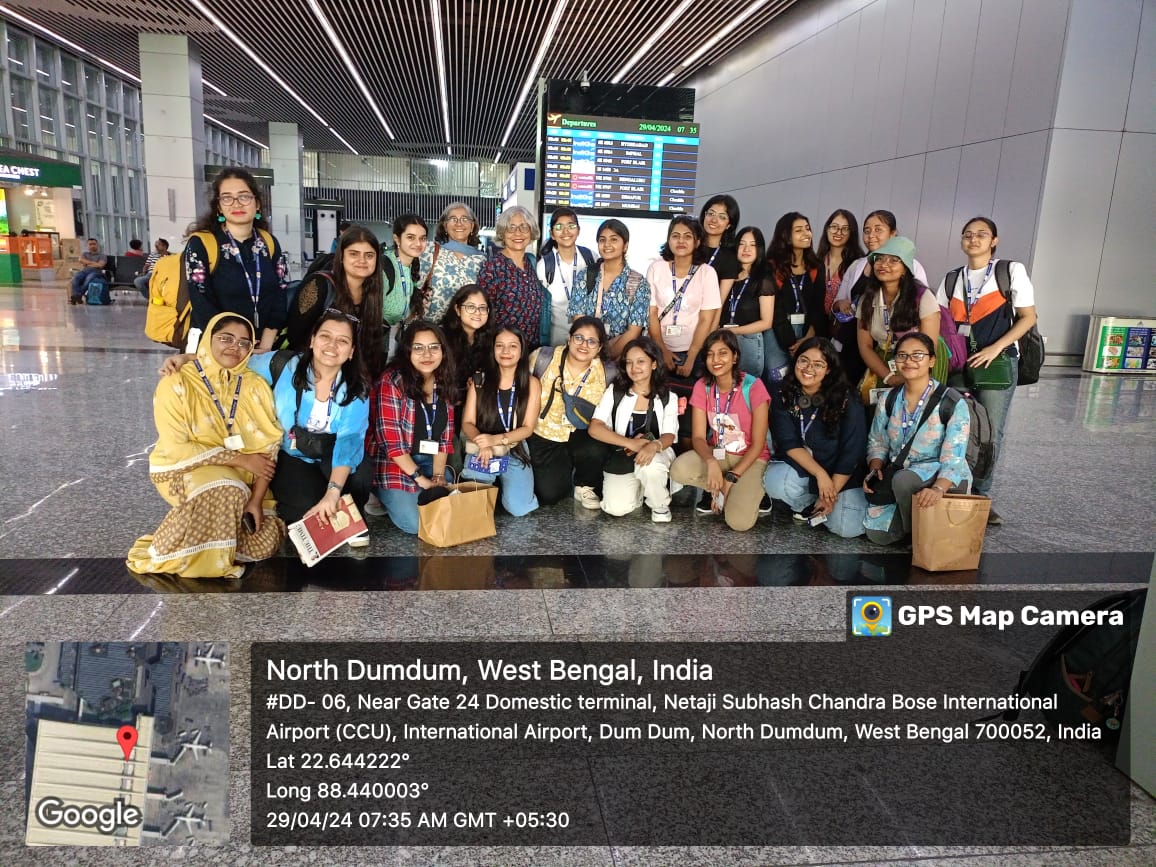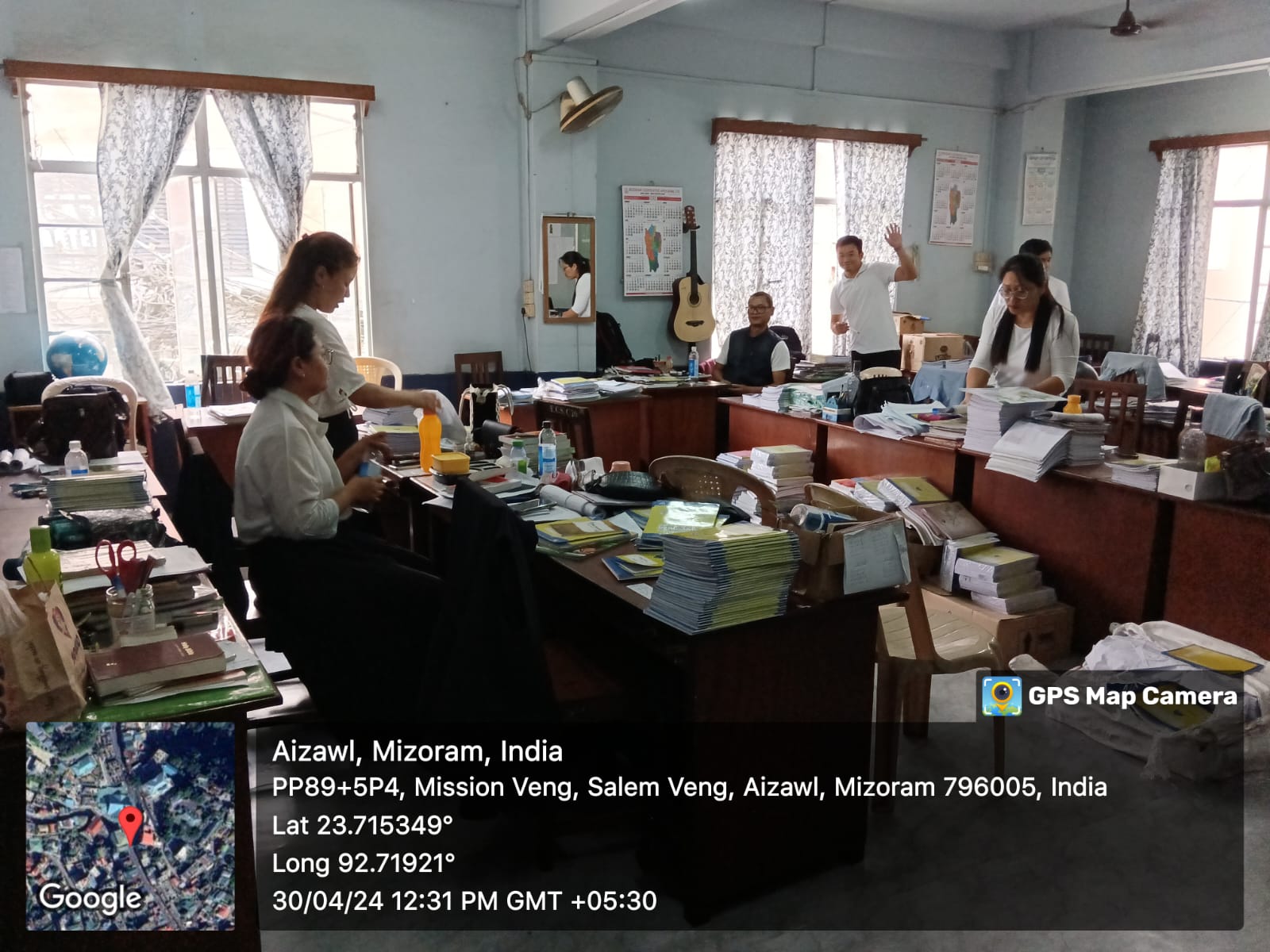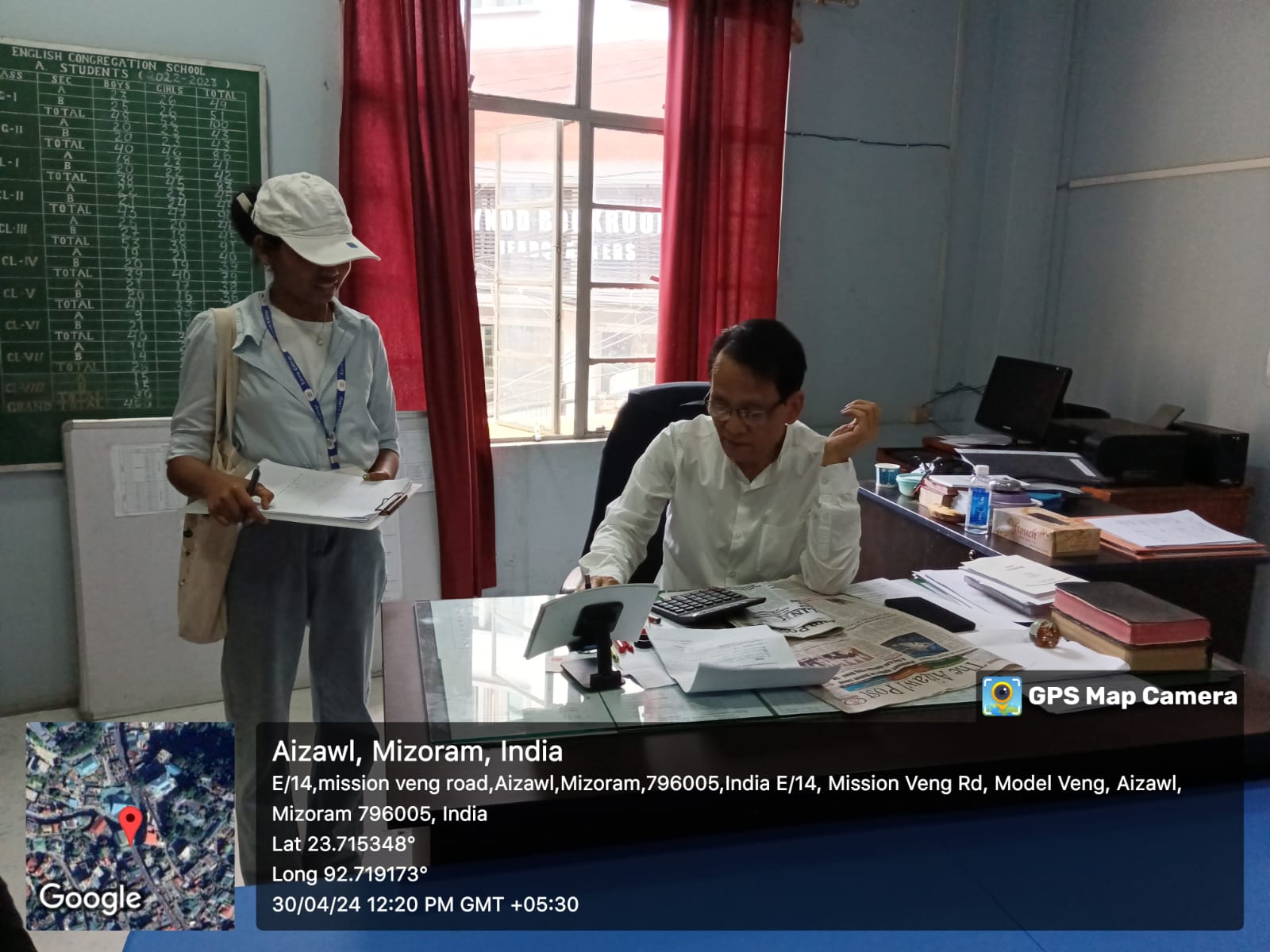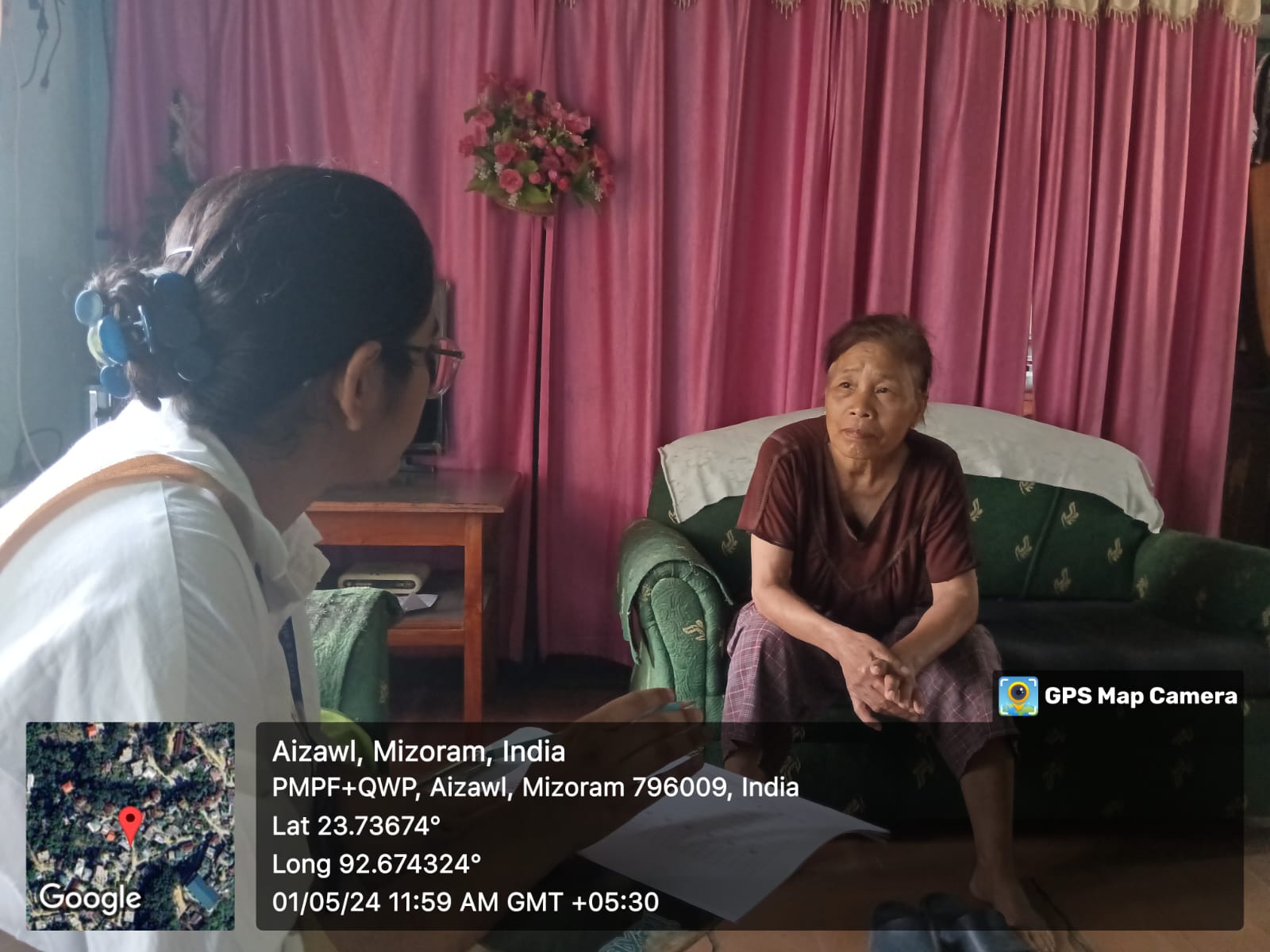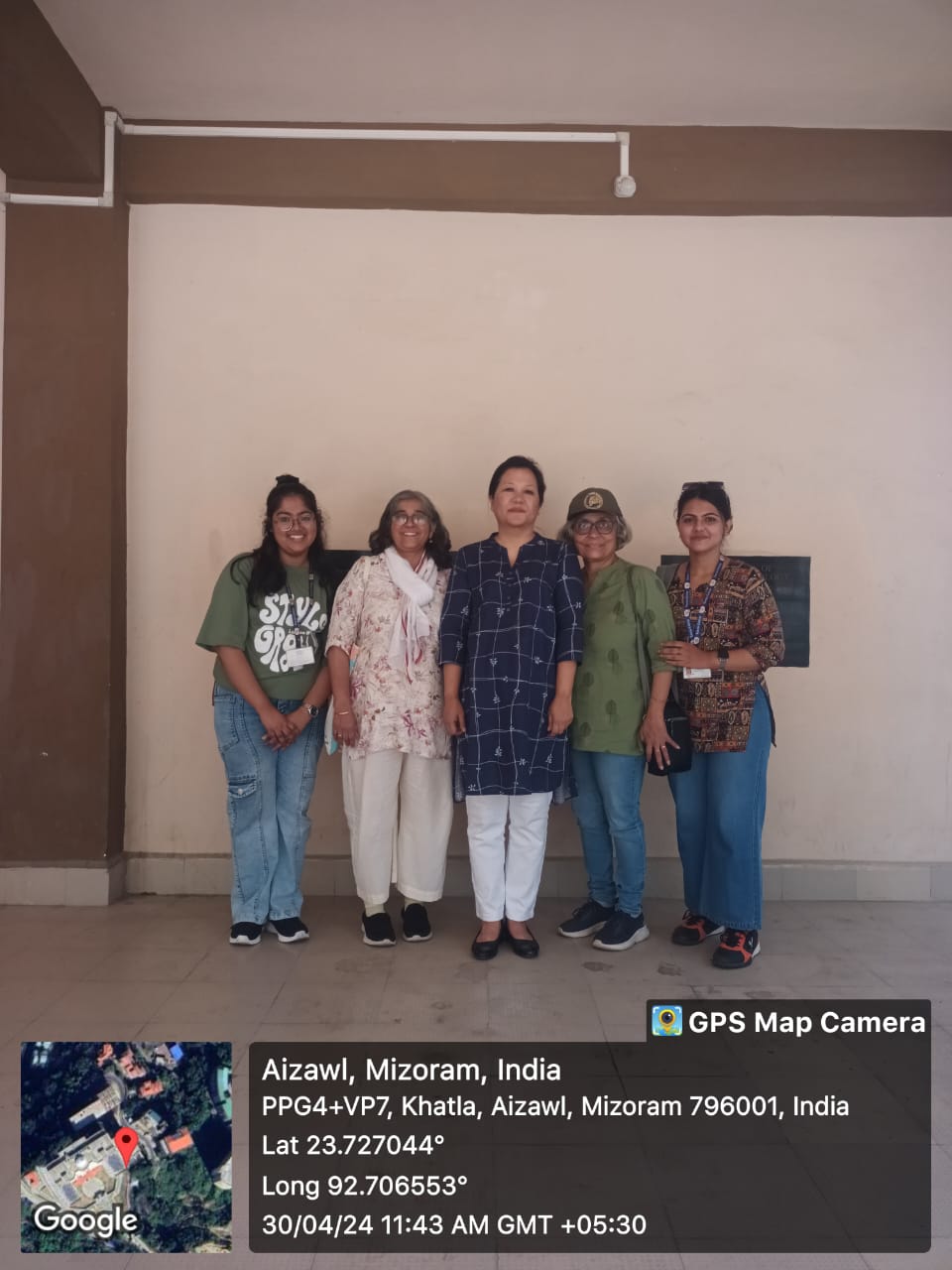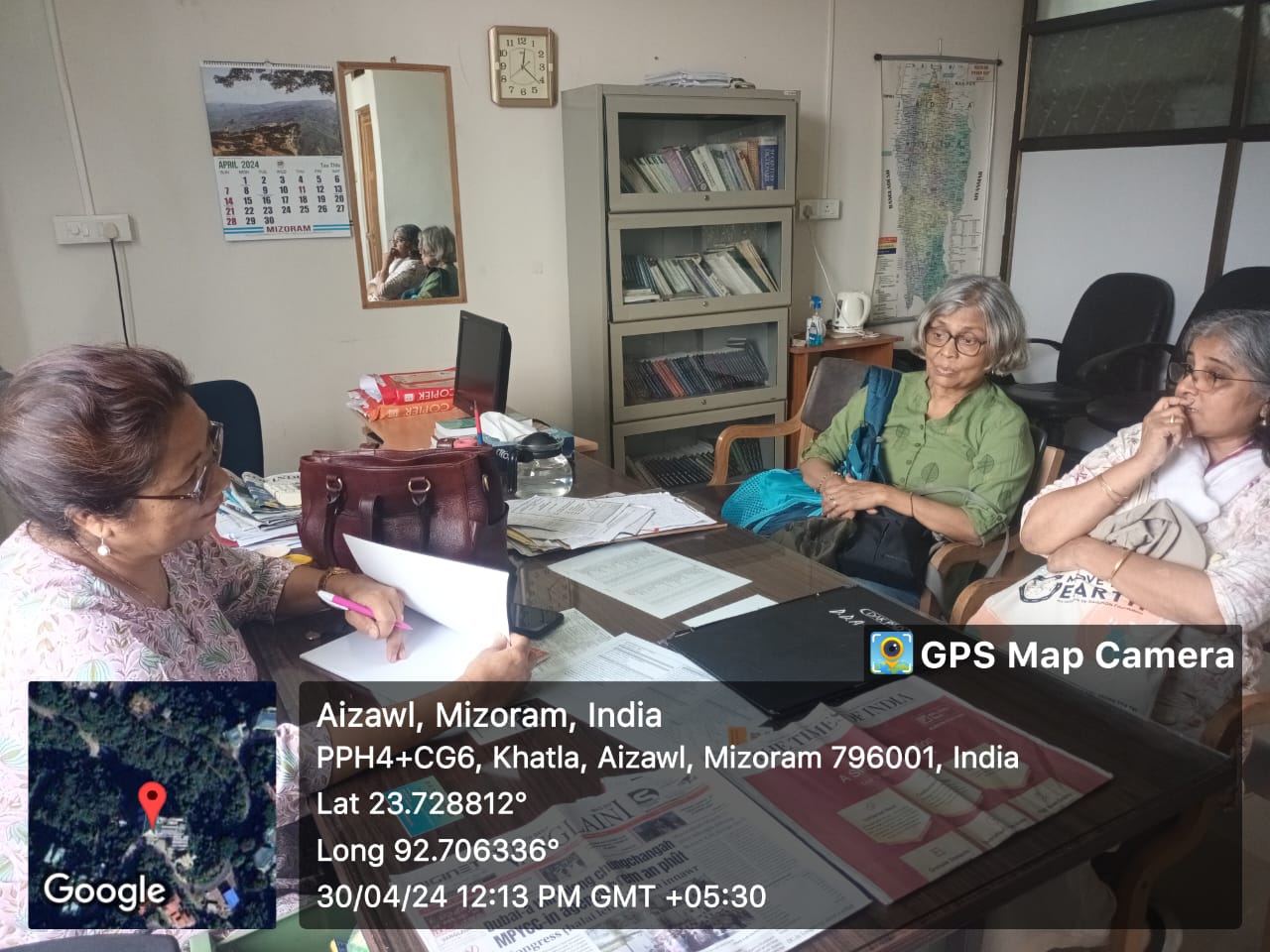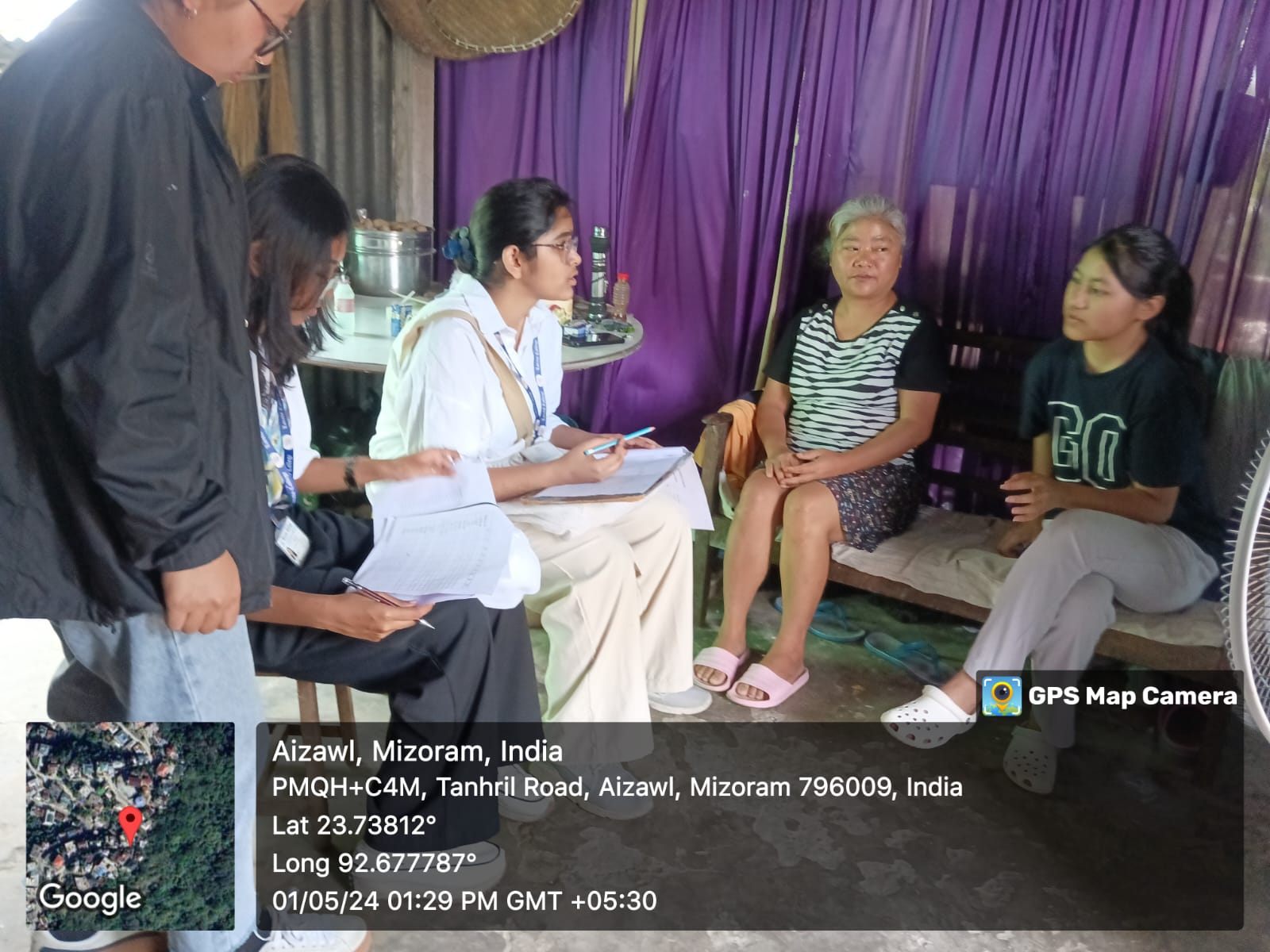Field Visit to Aizawl, Mizoram
The Semester IV students of the Department of Geography, Loreto College, Kolkata, accompanied by two teachers, embarked on a field trip to Aizawl, Mizoram from April 29 to May 6, 2024. A beautiful hill city, Aizawl, the capital of Mizoram, is situated at about 1132 metres above sea level. Flanked on the north by the lofty peaks of Durtlang, the city is set on the ridges of steep hills overlooking the sylvan valley of the river Tlawng in the west and the river Tuirial in the east and south. The city also features a landscape of verdant hills stretching away to the horizon. In summer, the temperature ranges from 20–30 degrees Celsius, while in the winter, it is about 11–21 degrees Celsius.
The students actively engaged in conducting a survey of two markets on the first day. On the following day, the students collected secondary data, maps, and other information from the various administrative offices in Aizawl. An interactive session was organised by the Departments of Geography and Geology of Mizoram University (MZU), where the students learned about the various aspects of palaeomagnetism, weathering, and landslides. A detailed account of the geography of Mizoram was also presented by the faculty members of the university. The interactive session and guided activities in the paleomagnetic laboratory greatly enhanced the students’ learning experience.
No field trip is complete without a socio-economic survey at a household level. The village chosen for this survey was Tanhril, a rurban settlement which had characteristics of both urban and rural settlements. The help and support provided by the research scholars of MZU for the household survey ensured that language was not a barrier for the questionnaires prepared meticulously to conduct the interviews. This survey highlighted the demographic characteristics, the problems faced by the inhabitants, and the cultural landscape of the Mizo village.
The discussion with the MZU scholars on the fast-paced unplanned urbanisation of Aizawl city was of particular interest. Instrument surveys including the prismatic compass and abney level surveys were also conducted. Additionally, the students engaged themselves in conducting a fluvial survey on the River Tlawng, the longest river of the state, to calculate the velocity of the river. The trip ended with a sightseeing tour, which included a visit to Solomon’s Temple, a trek downhill to Khawhpawp Falls, and a visit to the Mizoram State Museum and the Aizawl Theological College.
The field trip effectively bridged the gap between classroom theories and real-world scenarios, enabling students to amalgamate theoretical concepts with practical applications. The impact of the field trip will undoubtedly resonate with students for years to come. The immersive experience left a lasting impression, significantly deepening the students’ appreciation for a unique culture in the country. Through the visit, the students were also able to identify their own strengths and build new friendships.
